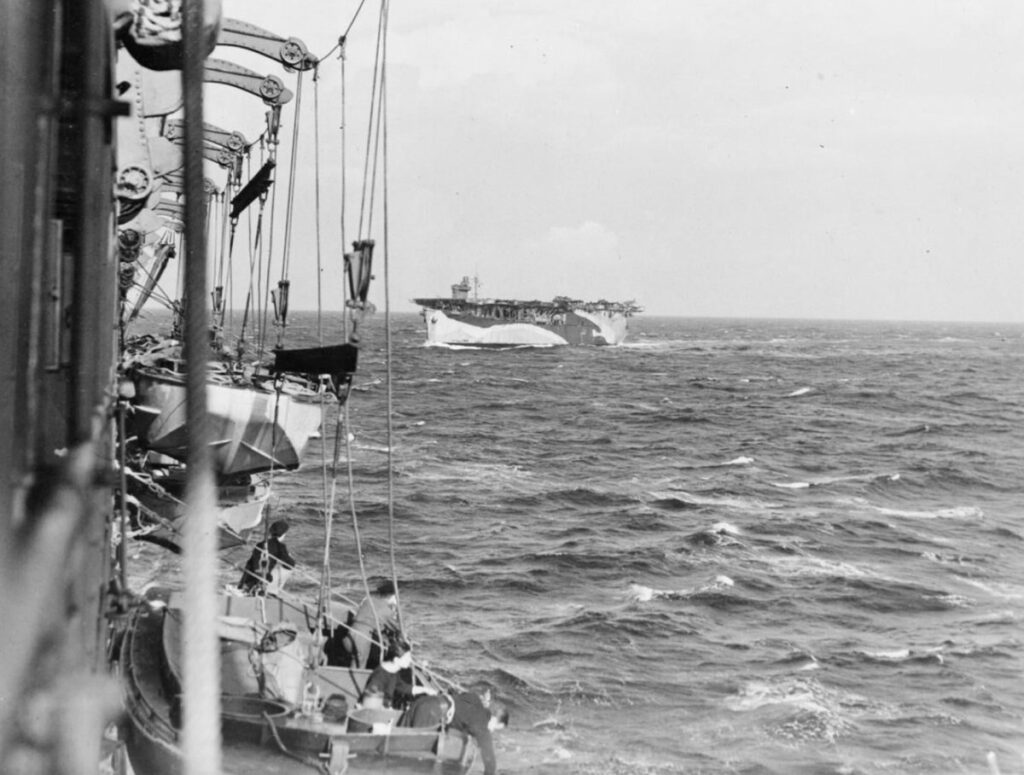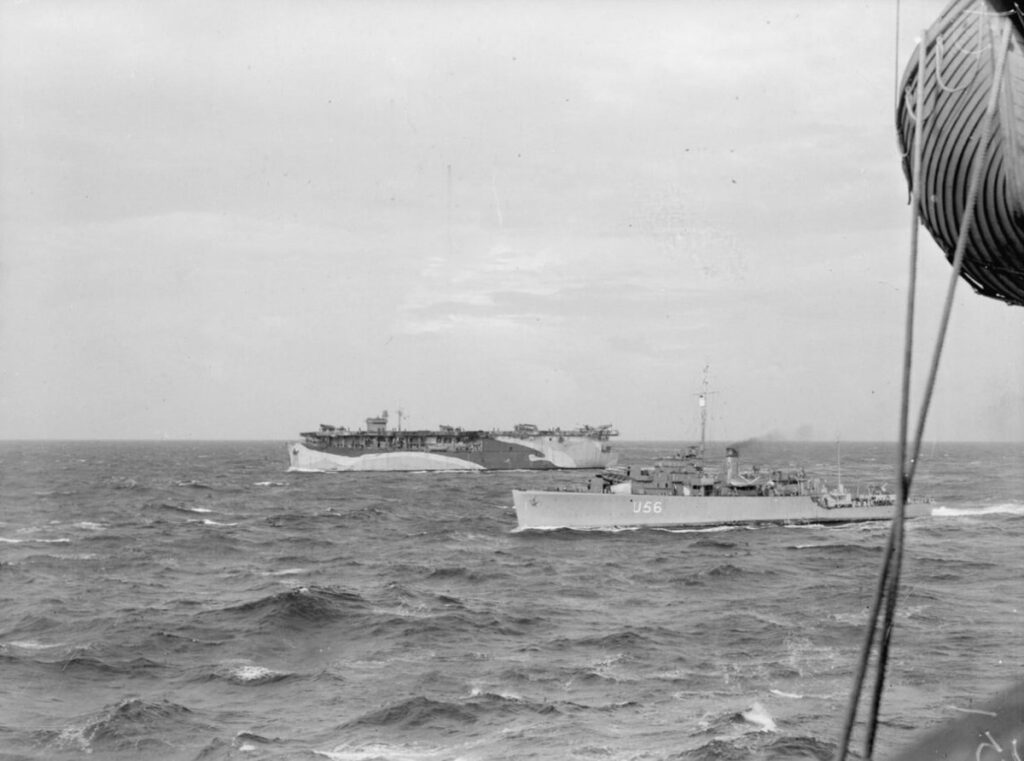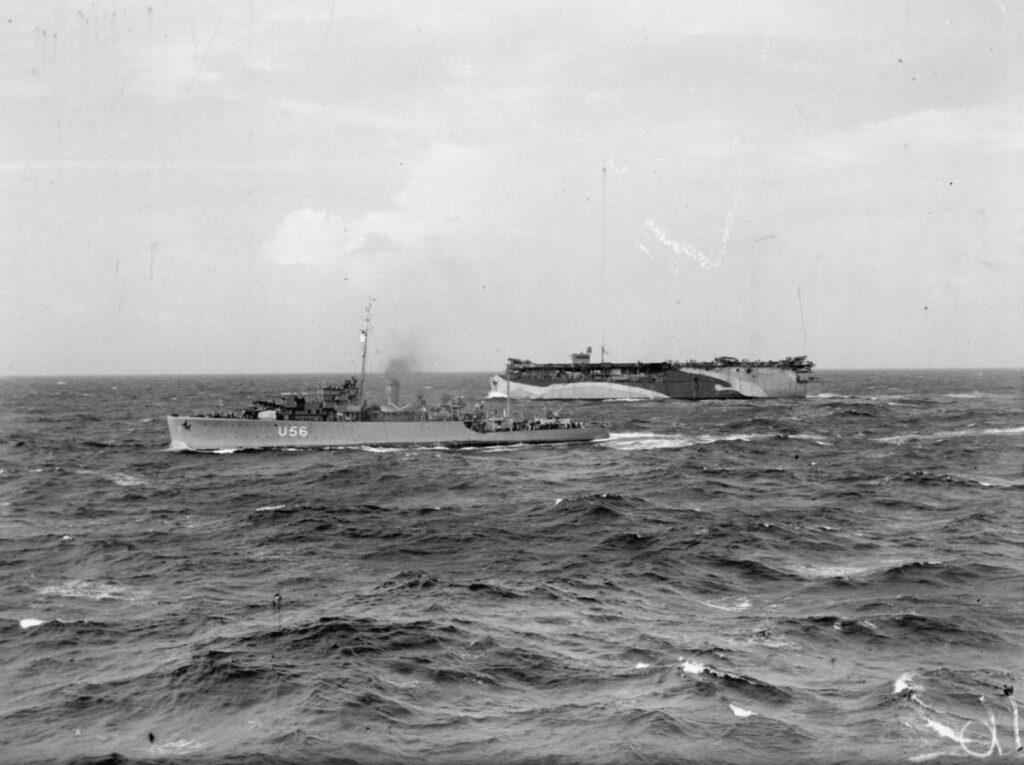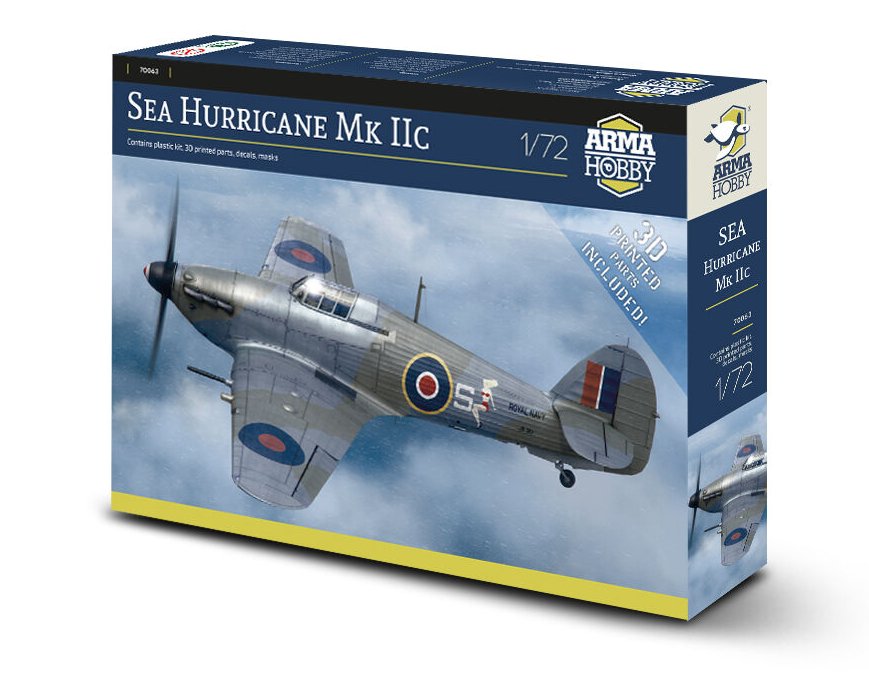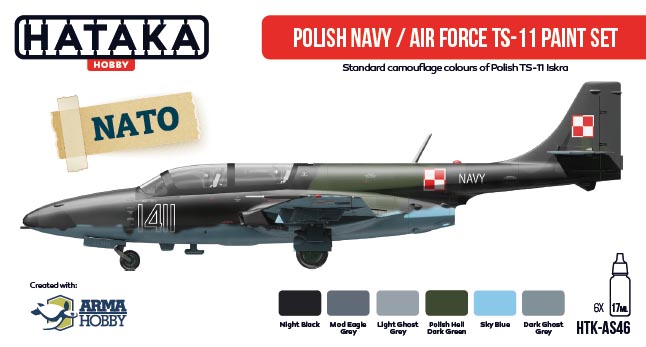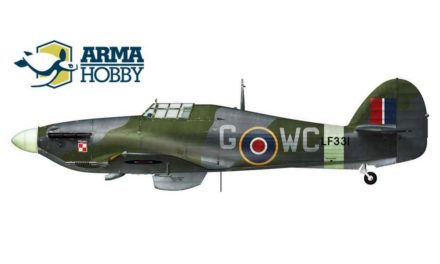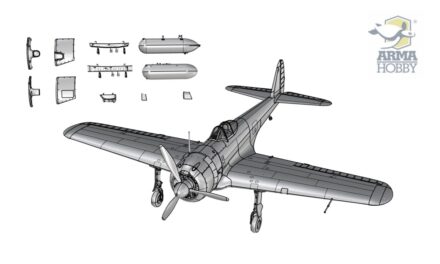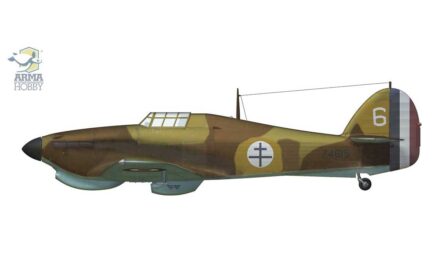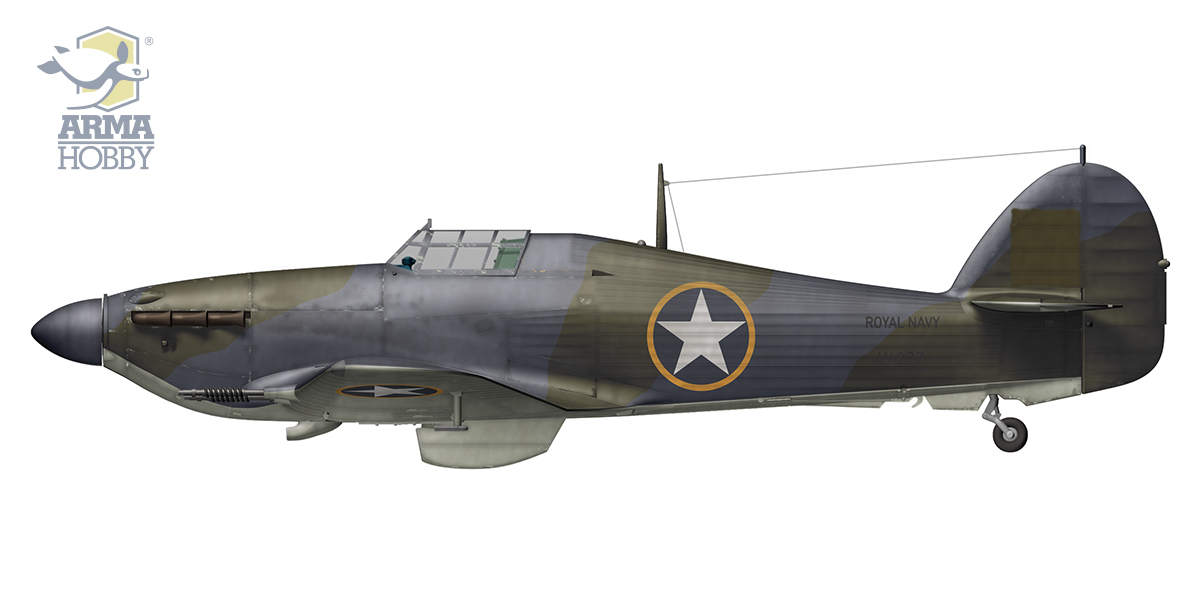
In the fall of 1942, Allied forces were preparing for Operation Torch – a landing in French North Africa, behind the Afrika Korps lines. The opposing force there was to be primarily the French, and it was expected that they would not offer any serious resistance to the Americans. So it was decided to disguise the British planes in American colours. We invite you to read the next episode of #Armastory about sea Hurricanes by Wojciech Łuczak.
Stronger Hurricanes – just in time for Torch
Besides No. 800 Squadron, other FAA fighter units that had distinguished themselves while flying the Sea Hurricane IB also underwent re-equipment in the autumn of 1942, before Operation ‘Torch’ (the Allied landings in North Africa). Nos. 802 and 833 Squadrons, the heroes of the defence of the PQ 18 convoy, received Sea Hurricane IIBs at the end of September. No. 804, which initially trained pilots on the Mk IIB, was already operational on the Mk IIC from October. No. 891 Squadron, newly formed under Lt. (A) M.J.S. Newman on 1 July 1942, started training on the Sea Hurricane IB but re-equipped with the Mk IIC in September. It was assigned to the escort carrier HMS ‘Dasher’. Nos. 801, 807, 880, 884 and 885 Squadrons, which enjoyed the fame of victorious veterans, re-equipped with the Seafire, becoming the Royal Navy’s fighter elite.
HMS Bitter manoeuvres under destroyer cover during preparations for Operation Torch – the Allied landings in North Africa. On board, we see Sea Hurricane II, most likely with and without cannons, and Swordfish with folded wings. Biter was one of three escort carriers sent into action on November 8, 1942, with Sea Hurricane IIB and IIC on board. The others are HMS Avenger and HMS Dasher. Biter was distinguished by the presence of three Swordfish in addition to the fighters. Before the action, they were transferred to the base in Gibraltar. Photo via Adam Jarski
Altogether, the FAA sent 141 fighters to cover the invasion of French Africa on 8 November 1942. These included 39 Sea Hurricane IIBs and IICs and only six completely outdated Fulmar IIs of No. 809 Squadron. The new Sea Hurries were deployed on escort carriers with large lifts, which was of obvious importance when operating relatively large-span fighters with non-folding wings. Nos. 802 and 883 (six fighters each, but according to some sources a total of fifteen) found their new home on the veteran of the Arctic battles, HMS ‘Avenger’. HMS ‘Biter’ carried No. 800 (fifteen machines), while HMS ‘Dasher’ housed Nos. 804 and 891 (six aeroplanes each, but according to some sources only nine altogether). All Sea Hurricanes went into action with the US stars painted on in place of the British roundels and the fin flashes obliterated. The change of markings was meant to somehow neutralise the open enormous hostility of the French towards the British navy.
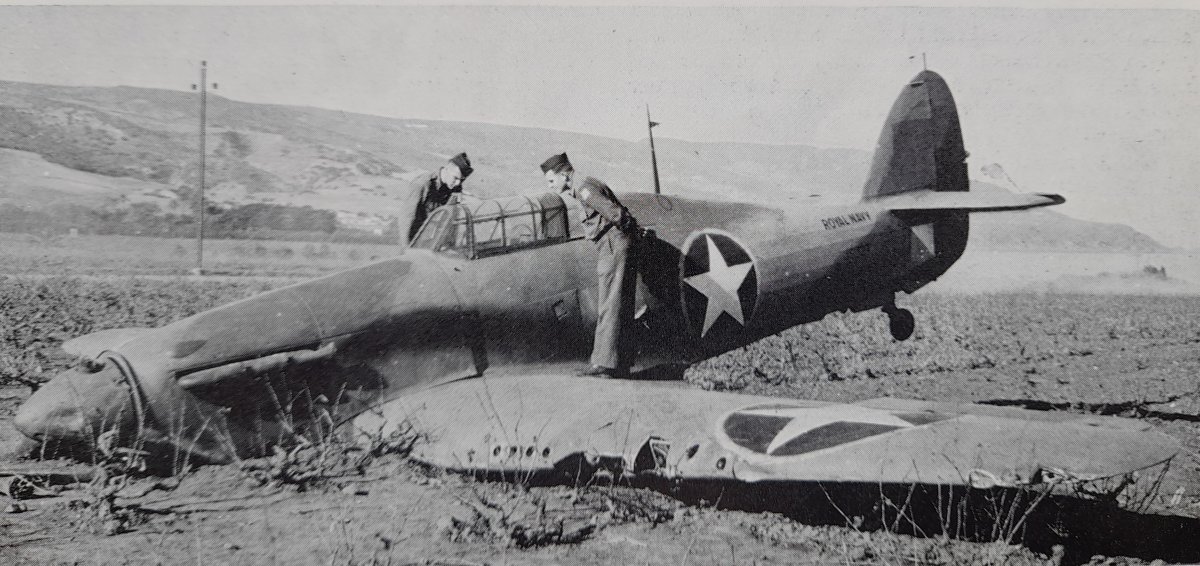
Sea Hurricane IIB JS327 with twelve wing machine guns from No. 804 Squadron from the aircraft carrier HMS Dasher viewed a few days after the action by curious Americans on the beach in St. Leu. The inexperienced pilots of the 804th could not find their own aircraft carrier on their way back from patrol. This became the subject of sharp criticism from the Admiralty. Photo: Wojciech Łuczak’s collection
With “American” stars
The Sea Hurricanes entered combat with the Vichy regime’s French Air Force already in the early morning hours of the operation. While protecting allied strike machines, the bomb-laden Albacores, No. 800 Squadron engaged the intervening Dewoitine D.520s. It is noteworthy that the Mk IIB fighters were flown by very experienced pilots, while the cannon-armed Mk IICs were piloted by less known ones. Most likely, the machine gun-armed ones were positioned forward on the flight deck of HMS ‘Biter’ due to being less heavy, and were allocated to the commanders. Six pilots engaged the French fighters. Sub-Lt Blyth Ritchie in a Mk IIC shot down the first D.520. Lt Cdr J.M. Bruen, the commander, in a Mk IIB (JS355), claimed the next one. The well-known Sub-Lt Crosley in a Mk IIB (AG334) downed two more, and his wingman, Sub-Lt R. Thompson (JS273) scored another one as a probable. However, their return to the aircraft carrier was not as fortunate. Two fighters were unable to locate the ship and landed at Lourmel, fortunately already taken by the Americans. Three others ended up on HMS ‘Dasher’. The remaining one crashed on the beach. The six 804 Sqn Sea Hurries from HMS ‘Dasher’, flown by fresher pilots, failed to return to their carrier. Five of them landed at the racing grounds at St Leu, near the coast (two crashed their Sea Hurries: Mk IIC AM277 and Mk IIB JS327) and the sixth took to his parachute.
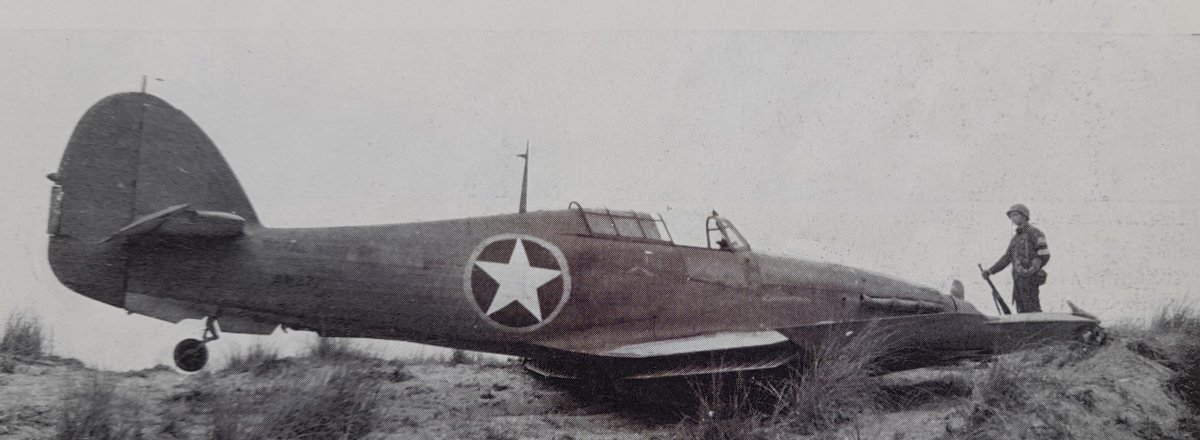
This is how the first day of Operation Torch ended for Sea Hurricane IIC AM277 from No. 804 Squadron from HMS Dasher with rather crooked American markings painted on it – November 8, 1942. The fighter received new wings with cannons before embarkation and thus became an IIC. We see him guarded by an American soldier on the beach in St. Leu near the Les Andalouses estate. Photo: Wojciech Łuczak’s collection
No. 891 Squadron pilots, who used the cannon of their Sea Hurrie IICs to strafe the base at La Senia, were surprised by counterattacking French D.520s that emerged from low cloud. Thus, shot down aeroplanes (JS226 and JS332, and Mk IIB AM278) were added to the loss count besides those written off in beach landings. Sub-Lt D.C. Greenhill was killed… In total, HMS ‘Biter’ logged 40 air operations and ‘Dasher’ 28 during the entire operation.

Sea Hurricane Mk X – 804 Squadron, HMS Dasher, operation Torch, late 1942 r. Canadian-made airframe, later equipped with cannon-armed wings. Markings typical of Operation Torch – stars instead of British cockades, “fin flash” on the empennage is overpainted

Photo of HMS Avenger during Operation Torch – the aircraft carrier at that time only with Sea Hurricane II on board. It was intended to provide fighter cover for the entire fleet. However, it is difficult to determine the versions of the planes gathered on deck in the photo taken from the destroyer passing by. However, you can see that they have British roundels overpainted with American stars. Photo: Imperial War Museum via Adam Jarskii
Third torpedo on target
The sinking of HMS ‘Avenger’, which escorted the MKF 1(Y) convoy from Gibraltar to Britain after the end of the African campaign, was the sad finale of Operation ‘Torch’. The carrier, which had survived the Sea Hurrie IB actions in defence of the PQ 18 convoy in the Arctic, and logged 60 Sea Hurrie II fighter sorties off the coast of Africa (including an unsuccessful pursuit of a Ju 88!), received the third torpedo of the extremely accurate salvo from the U-155 on 15 November 1942 at 3.20 a.m. off the coast of Portugal. She had transferred her last operational Sea Hurricane IIs onto HMS ‘Argus’ on 10 November. The torpedo initiated a disastrous ammunition explosion and HMS ‘Avenger’ sank within five minutes. Only twelve survivors were picked up. 67 officers and 446 men died.
Dasher’s mysterious disaster
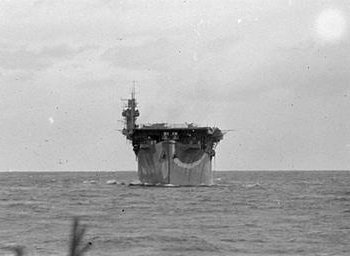 HMS Avenger was not the only aircraft carrier lost shortly after Operation Torch.
HMS Avenger was not the only aircraft carrier lost shortly after Operation Torch.
As fate would have it, the operations of a special Sea Hurricane IIC unit (volunteers from reorganized Nos. 804 and 891 Squadrons, joined after the African campaign by the best pilots from the excellent No. 800) in defence of Arctic convoys to Murmansk from HMS ‘Dasher’ failed to materialise. The aircraft carrier blew up on 27 March 1943. The Sea Hurricane aces had left the ill-fated ship in their machines before this happened, following their preliminary exercises. In the photo – Dasher in the early spring of 1943, shortly before the disaster. On March 27, in the Forth of Clyde, the ship was destroyed by a powerful explosion, probably of fuel vapours, which has not yet been fully explained. 379 crew members died, most of the bodies were never found.
English translation: Wojtek Matusiak
See also:
Buy 1/72 Sea Hurricane IIc online at the Armahobby.com!
Currently Defense Analyst. Journalist with more than 30 years of experience in defence reporting from fields of conflicts (Afghanistan, Balkans). Known from TV live commentaries on different contemporary defense and security issues. With catapult launches and arresting landings on the board of USS Saratoga and flights in the rear cockpit of F/A-18 D Hornet in his log book. Devoted scale modeller and great fan of naval aviation.
This post is also available in:
 polski
polski


